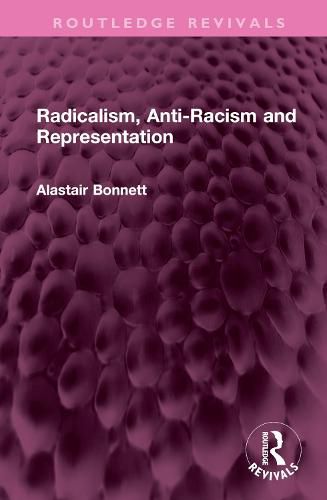Readings Newsletter
Become a Readings Member to make your shopping experience even easier.
Sign in or sign up for free!
You’re not far away from qualifying for FREE standard shipping within Australia
You’ve qualified for FREE standard shipping within Australia
The cart is loading…






First published in 1993, Radicalism, Anti-Racism and Representation is a study set within a wider political context for the discussion of ‘racial’ representation and anti-racism. The second half of the book is devoted to interview-based exploration of the ambiguities and political characteristics of ‘race’ equality consciousness amongst public educators. It is shown that there is no one anti-racism. Different ideals and assumptions have been arrived at within different historical and geographical contexts. It is suggested that this intellectual plurality provides a resource for those wishing to rethink anti-racism in the light of its contemporary malaise. The study also explores and explains the development of self-critical, reflexive, anti-racist and radical consciousness amongst educators. The book provides the first sociological study of anti-racism. Indeed, it is the first to provide a substantive critique of anti-racism from outside the New Right. It is also the first to look at this phenomenon geographically and to compare anti-racism in ‘multiracial’ and ‘white’ areas. This book will be of interest to students of human geography, sociology, history, ethnic studies, and race studies.
$9.00 standard shipping within Australia
FREE standard shipping within Australia for orders over $100.00
Express & International shipping calculated at checkout
First published in 1993, Radicalism, Anti-Racism and Representation is a study set within a wider political context for the discussion of ‘racial’ representation and anti-racism. The second half of the book is devoted to interview-based exploration of the ambiguities and political characteristics of ‘race’ equality consciousness amongst public educators. It is shown that there is no one anti-racism. Different ideals and assumptions have been arrived at within different historical and geographical contexts. It is suggested that this intellectual plurality provides a resource for those wishing to rethink anti-racism in the light of its contemporary malaise. The study also explores and explains the development of self-critical, reflexive, anti-racist and radical consciousness amongst educators. The book provides the first sociological study of anti-racism. Indeed, it is the first to provide a substantive critique of anti-racism from outside the New Right. It is also the first to look at this phenomenon geographically and to compare anti-racism in ‘multiracial’ and ‘white’ areas. This book will be of interest to students of human geography, sociology, history, ethnic studies, and race studies.